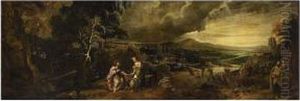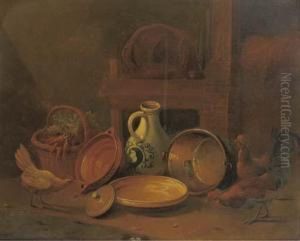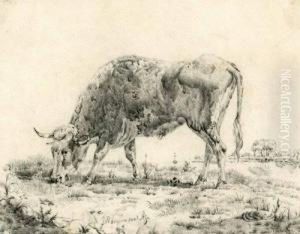Johannes Marinus Azn Verhoesen Paintings
Johannes Marinus Simon Azn Verhoesen, often referred to simply as Azn Verhoesen, was a Dutch artist born in the late 18th century. He was born in the year 1774, during a period of significant political and social change in Europe, which included the Dutch Republic's transformation and the effects of the French Revolution.
Azn Verhoesen's artistic career unfolded during the Romantic period, which was characterized by a strong emphasis on emotion, nature, and individualism. His works are less known in comparison to the major figures of his time, and as such, details about his life and oeuvre are not as widely documented or studied as those of his contemporaries. However, like many artists of the time, his work presumably would have reflected the Romantic sensibilities of the era, possibly focusing on landscapes, still lifes, or genre scenes imbued with a sense of emotion and personal expression.
He lived through the Napoleonic Wars and the subsequent political restructuring of Europe, which would have had an impact on the art market and the kind of subjects that were in demand. Despite the lack of widespread recognition, artists like Verhoesen contributed to the rich tapestry of Dutch art during a period when it was undergoing significant changes due to shifts in taste, technology, and the political climate.
Johannes Marinus Simon Azn Verhoesen died in 1846, having lived a life spanning the end of the old Dutch Republic and the rise of the modern Dutch state. His death marked the end of a life that, while not as well-recorded as that of some of his peers, was nonetheless part of the broader narrative of Dutch art history. His works remain a testament to the skills and aesthetic values of a period that valued the beauty of the natural world and the expression of deep, often sublime, emotional experiences.



